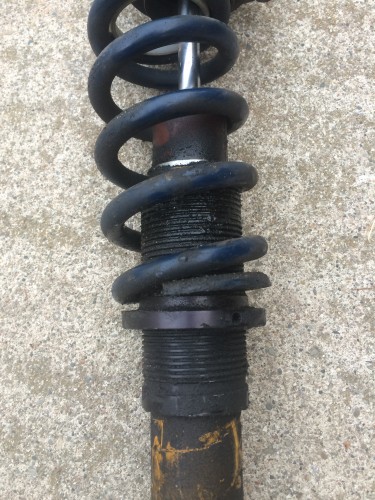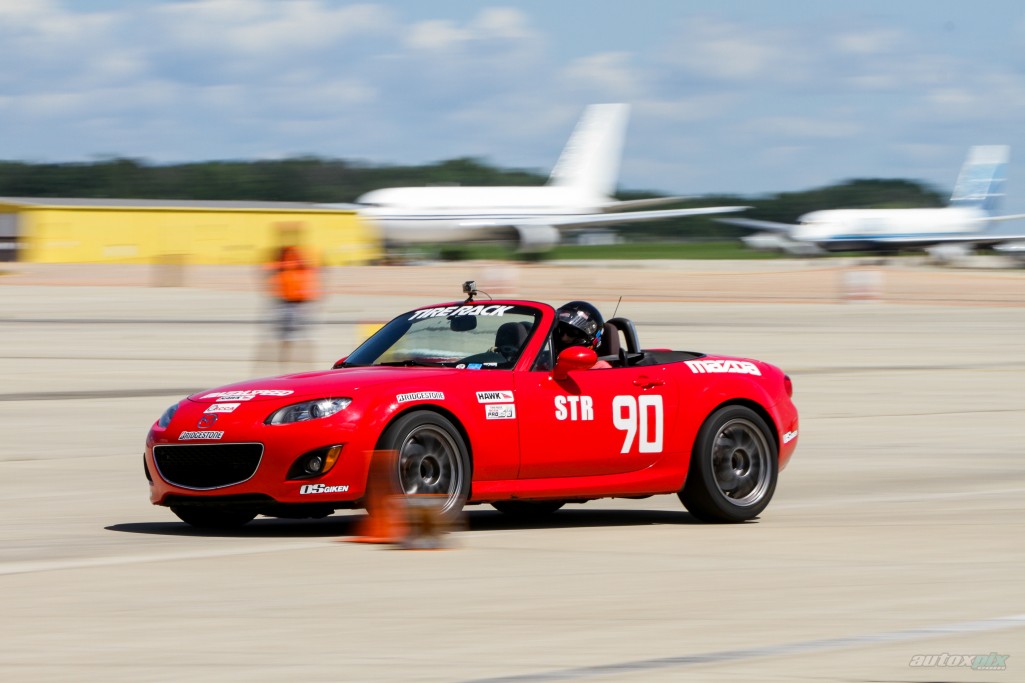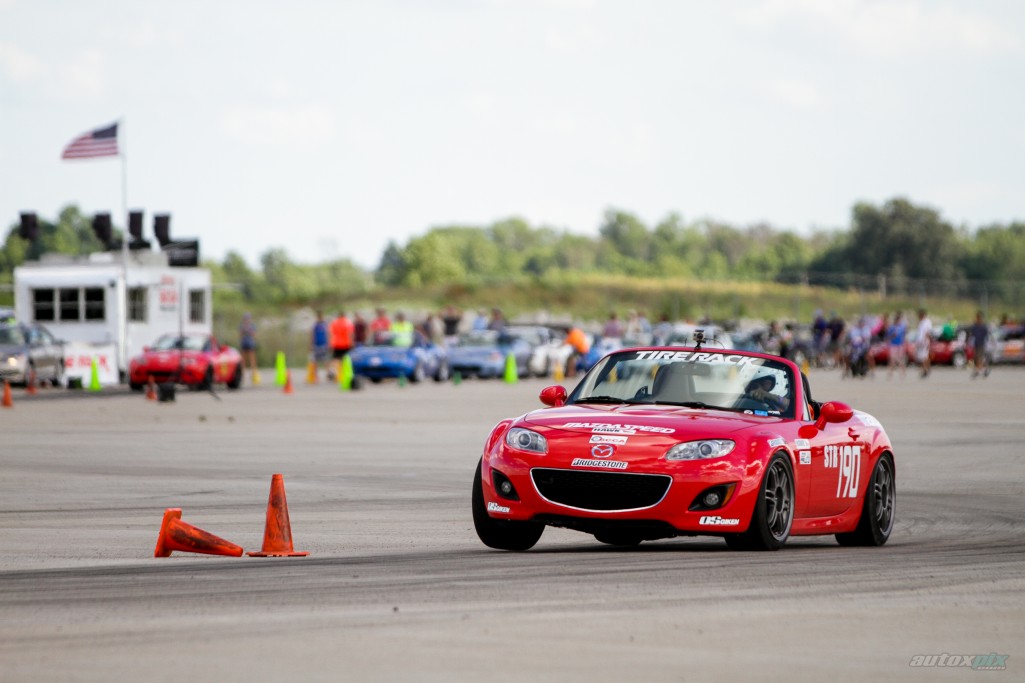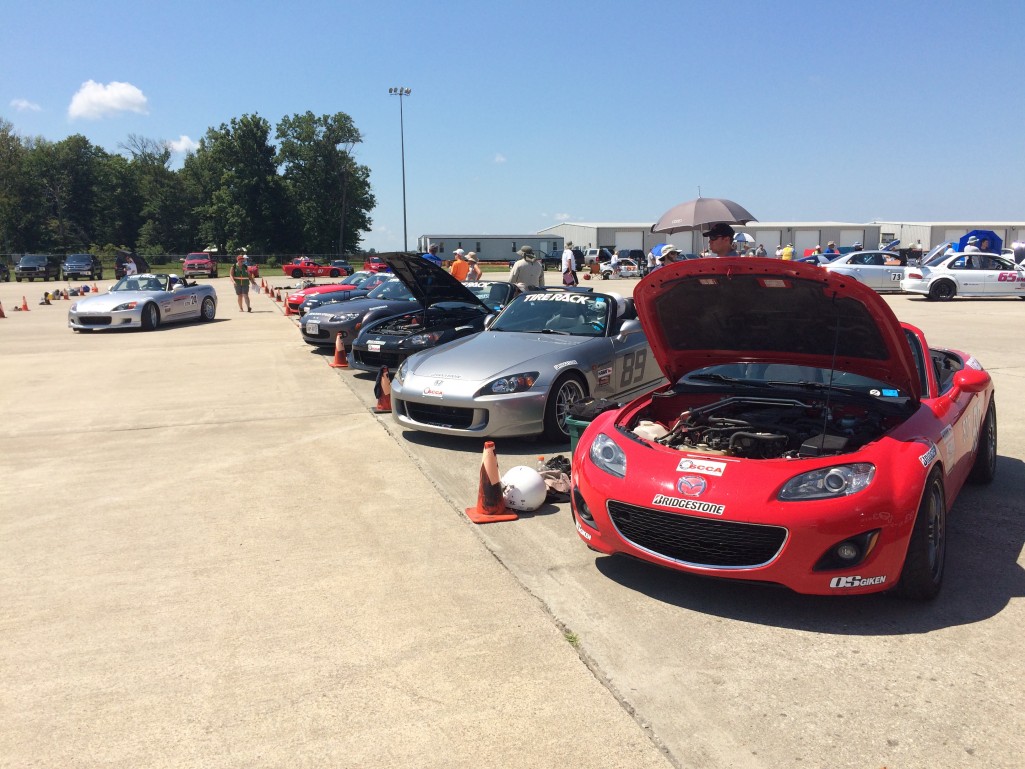Well, it has finally come to pass. The very first car that I had ever bought brand new, the car that has taken me on countless road trips, the car I beat the crap out of around Hallett at a couple of Miatas at Hallett events, the car that was my first ride as I dipped my toes into the National autocross circuit, and caused me much pain and anguish as it systematically destroyed each false preconceived notion I had in my head about how to drive and how to set up a car, has left my ownership.
I returned from Baltimore, where the new owner dropped me off at the airport for my return trip back to Detroit, sans the car I thought I’d never let go.
I don’t know shit about setup
The story begins with the second half of my 2015 National autocross season. Despite some of my crap driving early on in the year, I was optimistic that I was on the right track with the car. There were some annoyances in the handling of the car that I was sure I knew the solution to. Once I had the car dialed in, I’ve be ready to challenge, for the first time, for a trophy spot in STR at Nationals.
At Spring Nationals, the only other National autocross event outside the Tire Rack SCCA Solo National Championships that was held at the Lincoln, Nebraska site, I had the Miata set up on 600 lb/in springs on the front, 400 lb/in springs in the back, and a stock sway bar on the front, with an OS Giken limited slip clutch diff with the out-of-the-box tune as a 1.5 way diff. Car drove okay, but surely, I could do better.
As this year’s crop of street tires has been a magnitude grippier than last year’s top crop of street tires, I had the bright idea that this meant I could jack up the spring rates. After all, all race cars have stiff suspensions, right? Might as well bump up the roll stiffnesses on both axles and I’d be unstoppable, obviously.
There was a conflux of events that basically boiled down to one simple fact: I radically changed the setup of the car one month before Nationals, which was a really stupid thing to do, and spent the vast majority of my time chasing my tail trying to get the car back into a drivable state for Nationals.
First of all, I had my spare OS Giken diff retuned by the man, the myth, the legend of OS Giken and fellow autocrosser Jonathan Lugod to what he recommended as the best known diff setup for STR NC Miatas like mine: the same accel and decel ramps as the out-of-the-box tune, but with the diff tuned into a 1.1 way instead of a 1.5 way to loosen up the car on corner entry. I was initially concerned with how quickly the diff locked up upon throttle on, as after talking to Chris Lin and a couple other STR NC Miata drivers last year at Nationals, the general consensus was that the diff’s aggressive lock up was the primary culprit for the aggressive throttle on oversteer my car had. But Lugod is the expert, right, so who am I to question him? I decided to roll with his suggestion and had him rebuild the diff and ship it back to me as quickly as possible so I could install the diff before a local test and tune.

Unfortunately, while working on my car while the diff was on its way to my house, I made the unfortunate discovery that my front shocks were well on their way out, with one front shock leaking an impressive amount of shock oil all over the shock body. That meant that the Miata would miss the July test and tune at Oscoda while I shipped my front Konis to Truechoice Koni Racing Services to get rebuilt. The culprit? The chrome was flaking off both front shocks’ shock rods, with one shock leaking plenty of oil due to a large wear patch, and the other shock on the cusp of leaking plenty of oil with a growing wear patch. Much to my amazement, from the moment I shipped my shocks out, I had them back in my hands in two weeks. That’s phenomenal turnaround time for a shock rebuild smack dab in the middle of a racing season.
Thing is, I neglected to take note of what the front shocks were set at before I had sent them away to be rebuilt. I had also hadn’t fiddled too much with the shocks in general, only touching the rebound adjustment and generally neglecting the compression adjustment. Because the compression adjustment of my shocks was such a pain in the ass (you have to extend the shock rod and twist it in order to change compression, which necessitates lifting the front axle off the ground and preferably taking the front wheels off for easier access), I left them as they were set by the previous owner of my shocks. This meant two things: not only did I not know where the shocks were initially set at compression-wise, it also meant that I didn’t have a frame of reference for the fidelity of each compression adjustment step.
When I got my shocks back, I threw them back onto the car with new springs as well, a pair of 700 lb/in springs that are a good degree stiffer than the 600 lb/in springs the car had before. Because I didn’t know where the front shocks were set compression-wise, I took a wild guess and figured that, since the car is stiff, it needed a shit ton of compression. So I put in a shit ton of compression on the front shocks.
If the front shocks get a shit ton of compression, naturally, that means the rear shocks should also get a shit ton of compression too, right? So I added more compression and rebound to the rear shocks as well, installing them back into the car with 450 lb/in springs.
Finally, the diff went back into the car. The car was lowered on all four corners, and I sort of eyeballed the alignment to a state of “it looks pretty even on all four corners.”
The car was ready for action, or so I thought. The first test of the car’s new setup would not be the test and tune at Oscoda, like I had originally planned, but at the Wilmington Pro Solo.
Fail after fail at Wilmington
Codriving with me for the weekend would be Tim Viars, fellow arch nemesis from Ohio who also has an STR NC Miata. His engine had suffered a failure at the Toledo Match Tour, and was out of a ride while he was putting a new engine in his car, so I offered him a drive in my car for the two Wilmington events in August. This would be a good opportunity to have someone else give me feedback on my own STR Miata.
The initial feedback was that the balance of the car was decent, but neither Tim nor I could apply power as early as we wanted, nor could we hold the throttle down during some of the longer elements. As it turned out, the car was skipping across the pavement in some of the bumpier sections of the course.
At the same time, Joe Ottofaro and Alex Kang were present with their car, an NC2 just like mine, with spring rates in the same ballpark as my car, yet they seemed to be doing just fine and running at the pointy end of the field. What was the difference?

Tim suggested that perhaps I had dialed in too much compression into the car. He noted that he didn’t run all that much compression in his own car — running towards the softer side of the adjustment range in fact. Meanwhile, I had my compression almost cranked to the max.
And because this was a Pro Solo, there was no way to adjust compression in between runs. Any compression adjustment changes would have to wait until between the Day 1 morning and afternoon sessions, or before Day 2 morning sessions.
So we did our best on a stiffly spring, red-colored bucking bronco for our morning runs, and not surprisingly, didn’t do all that well. Immediately after the morning session, we took the car back to the paddock, put it up on jack stands, and dropped the compression on all shocks by three clicks.
For the afternoon session, the car felt better. It still wasn’t great, as the car was still pretty bouncy through the bumpy parts of the course, but it no longer felt like we had to worry about the front wheels skipping off our desired driving line. We still couldn’t sit in the gas when we wanted to, though.
Now the question was this: is the car’s remaining jounce on course due to improper shock settings, or due to the fact that I’ve got super stiff springs on the car?
I didn’t answer that question that weekend. I had decided that the car drove well enough, and the last thing I wanted to do was do another drastic change for the Day 2 runs, which ultimately are the most important runs in any Pro Solo weekend. Knowing how the car drove was more important than not knowing how a setup change would affect handling for the last four runs of the event. So we drove the best we could.

We finished midpack in the Pro. The frustration was starting to set. I made these changes to make the car unstoppable. What gives?
It also presented a conundrum: I could try to refine the setup as-is, or I could go back to my old setup with the softer spring rates. Thing was, the older setup was good, but it wasn’t great. Perhaps this newer, stiffer setup could be refined into a great setup?
I decided to keep the stiffer setup on the car. I also decided not to change a thing on the setup between the Wilmington Summer Pro and the Wilmington Champ Tour, the next National event on my calendar, and the last National event on my calendar before the Pro Finale and Nationals at Lincoln.
Two weeks rolled around, and I’m back in Wilmington again with Tim. We’re driving my Miata, as it was set up at the end of the Wilmington Summer Pro, for the Champ Tour.

Tim and I take our first runs and discover that the car is still quite bouncy. Nowhere was this more apparent than in long sweepers like the showcase turn. I discovered that the car didn’t seem all that bouncy at the Pro because the car had been so bouncy before that when we dropped the compression on the shocks, the difference in relative bounciness was so extreme that I had completely missed that the car was still extremely bouncy on an absolute scale. Then, when I come back to the car two weeks later with my baseline reset, I discover that — fuckin’ hell — the car is still way too bouncy. Did I use the word “bounce” enough in this paragraph?
Despite this being a Tour format and not a Pro format, the amount of time and effort needed to adjust compression on the shocks was still too much to attempt adjusting compression in between our runs. Any major compression adjustment would have to wait until our Day 1 runs were over. Which sucks because each day of the event stands on its own, unlike the Pros in which you only had to get things right for the last day.
After our runs, we brought the car back to the paddock, and we dropped the compression another two clicks all around.
For Day 2, the car drove significantly better. It seemed like that I had finally figured things out, or at least to the point where the car appeared to drive as well as it did before I made the wild setup changes. Tim was still thinking that the car could be much better; this would be the last event that we codrove together, as his Miata now had its new engine and would be up and running shortly. He offered me a codrive in his car at some point in the future, as he still liked his car’s setup better and thought that it would be useful for me to experience for myself how his car drove in comparison to mine. Lovely opportunity, but one that I wouldn’t be able to take him up on until the next year.
Also present at the Wilmington Champ Tour was James Dunham and Shane Chinonn-Rhoden, both driving James’ silver NC Miata in STR. I saw them all the time last year, as I had traveled to the DC Pro and saw them at nearly all the Ohio events and at Nationals, but didn’t see them all that much this year. This last National event before Nationals was the first time that I had seen them this year.
They were at Wilmington to get a handle on James’ car before sending it off to Nationals with Shane. They ran an abbreviated season this year, hence why I didn’t see them all that much, and were just getting around to setting up the car with the newest crop of sticky street tires. They had a set of Bridgestone RE-71Rs on the car, and made a single, solitary setup change to account for it — adding a rear sway bar (or stiffening the existing one), if I remember correctly.
As usual, Shane seemed pretty damn on the ball with James’ Miata. That got me talking to James about how he set up his car.
He had told me about his setup before, but I must have washed my mind clean of the details some time ago, because his setup came as a surprise to me (again). James subscribed to the idea that a softer suspension setup is better, and as a result, had 400 lb/in springs on the front and 450 lb/in springs on the rear, with the remaining roll stiffness needs on either end taken car of with sway bars. That’s a far cry from the setup that I was carrying, at 700/450 lb/in springs front/rear on my car, with the stock front sway bar and no rear sway bar.
Shane won the Champ Tour in STR, with Tim taking the last trophy spot with a 4th place finish.